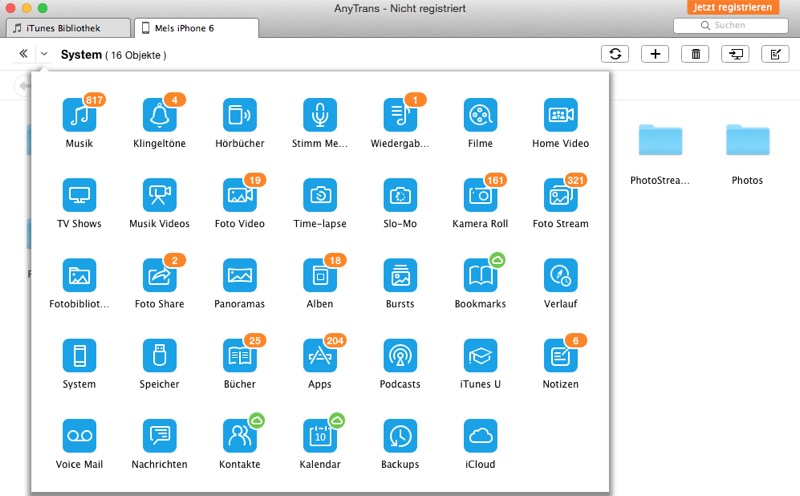
AnyTrans still supports it, if you like it, but you don’t have to use it.Īnother annoyance of iTunes that is eliminated in AnyTrans is duplication, which over time would end up taking over your memory. In iTunes, there was the concept of “libraries” which I never caught on to or like.

It seeks out iOS devices within range and pulls them up as options to connect with.įile movement is easier because not only can you move all of the files that you had on your device, you can move a selective set of files, if you so choose, giving you more modular file management control. Connecting to other iOS devices is quick and easy, using the “radar” function in AnyTrans.

Basic features include a robust app manager, a file manager, an iCloud data explorer and easy file transfers, moving files between two connected iOS devices. You open the app and you get a sense of how easy it’s going to be to backup/restore and manage your apps.Īt its very core, it works similarly to iTunes in that it syncs data between your computer and your iPhone, in both directions. The overall look and feel are simple and clean – almost Zenlike. If you are like me, the first think you’ll notice is how sleek the app looks. It’s developers characterize it as more than an alternative – it’s a huge improvement over iTunes, offering a simpler, cleaner and faster way to manage files. One of those alternatives is AnyTrans by iMobie. By now, if you have had an iOS device for a while and have struggled with backups and restores using iTunes, you are fully aware of it shortcomings and know that there are several alternatives in the app marketplace.


 0 kommentar(er)
0 kommentar(er)
